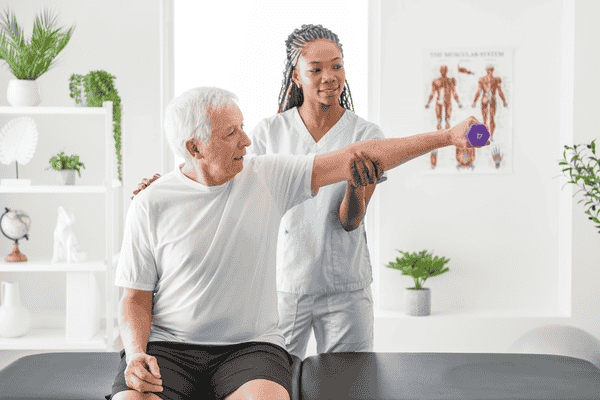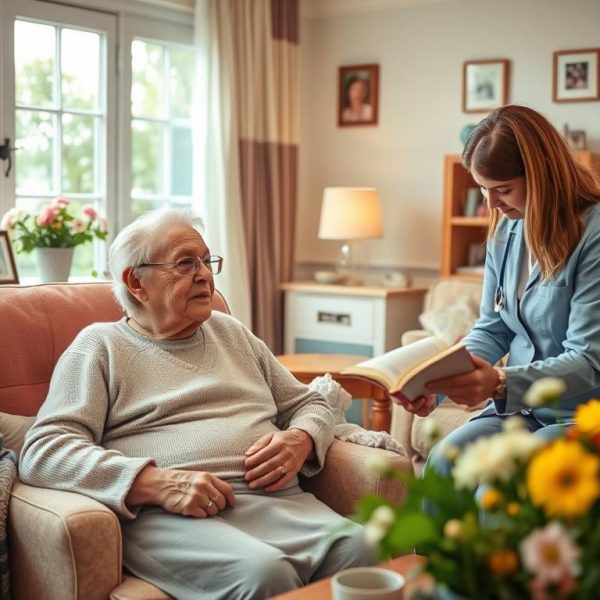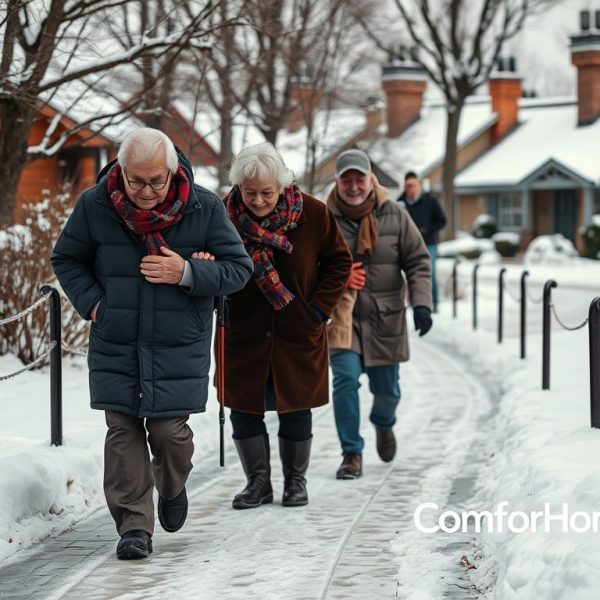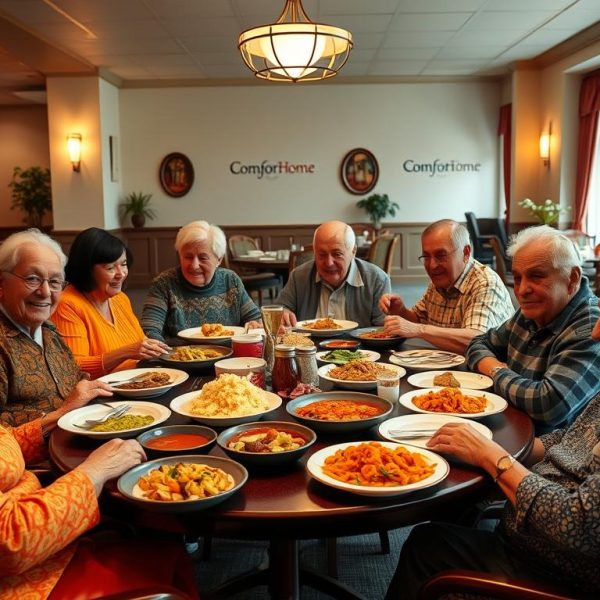In a small town in Ontario, the sun began to rise over the horizon, casting a warm glow through the kitchen window. Maria, a dedicated caregiver, was preparing for another day of assisting seniors in her community. She loved her job, but it came with its challenges. After a long week of lifting and transferring patients, her back had started to feel the strain need more body mechanics.
As she sipped her morning coffee, Maria reflected on her experiences. She remembered the first time she assisted a senior in transferring from a wheelchair to a bed. The awkwardness of the moment still lingered in her mind. She had been anxious and unsure, and it wasn’t long before she realized the importance of mastering proper body mechanics. Today, she was determined to share what she had learned with others.
Understanding Body Mechanics
Maria understood that proper body mechanics involve using the body efficiently to perform tasks, minimizing the risk of injury. It’s not just about lifting heavy objects; it’s about understanding how to move oneself and others safely. This knowledge is particularly crucial for caregivers who assist seniors, as many seniors may require help with mobility and daily activities.
“Good body mechanics are essential,” Maria thought. “They not only protect us but also ensure that the seniors feel safe and secure.”
The Importance of Body Mechanics in Caregiving
One of the first things Maria learned during her training was that caregivers are at a higher risk of injury. The physical demands of the job, combined with the unpredictability of working with seniors, can lead to strains, sprains, and even more severe injuries. By practicing proper body mechanics, caregivers can significantly reduce these risks.
Maria recalled her mentor, Helen, who had always emphasized the importance of using the right techniques when assisting seniors. “It’s not just about strength; it’s about technique,” Helen had said. Maria could still hear her mentor’s encouraging voice, reminding her to think before she acted.
Key Principles of Proper Body Mechanics
Maria decided to create a simple guide to help fellow caregivers master the essentials of body mechanics. As she began jotting down her thoughts, she remembered the key principles that had made a difference in her work:
- Maintain a Wide Base of Support: Standing with feet shoulder-width apart provides stability. Maria had learned this early on, especially when assisting seniors with balance issues. A stable base allows for better control during transfers.
- Bend at the Hips and Knees: Instead of bending at the waist, caregivers should bend their hips and knees while keeping their back straight. This technique protects the spine and utilizes the stronger leg muscles for lifting.
- Use Your Legs, Not Your Back: When lifting or moving someone, it’s crucial to engage the leg muscles rather than the back. Maria had learned this the hard way during her first month on the job. Now, she made a conscious effort to squat low, keeping her back straight as she lifted her patient.
- Keep the Load Close to Your Body: When carrying something heavy, it’s essential to keep it close to your body. This reduces strain on the back and helps maintain balance. Maria often reminded herself, “The closer, the better.”
- Turn with Your Feet: Instead of twisting the back when changing direction, caregivers should turn their entire body with their feet. This simple action can prevent unnecessary strain on the spine.
- Communicate with the Senior: Maria found that clear communication was vital during transfers. Before moving a senior, she would always explain the process and ask for their assistance, if possible. This not only made the transfer smoother but also helped the senior feel more in control.
Practical Techniques for Assisting Seniors
To put these principles into practice, Maria created a list of practical techniques for assisting seniors. She knew that mastering these would enhance her caregiving skills and ensure the safety of her clients.
1. Transferring from Wheelchair to Bed
Maria remembered her first attempt at this transfer. It had been challenging, but with practice, she had developed a systematic approach:
- Position the Wheelchair: Ensure the wheelchair is close to the bed at a slight angle. This minimizes the distance the senior must be moved.
- Lock the Wheels: Always engage the wheelchair brakes for safety.
- Assist the Senior to Shift Forward: Encourage the senior to scoot forward in the wheelchair. This can be achieved by having them lean forward slightly.
- Support the Senior’s Weight: Stand in front of the senior and place your feet shoulder-width apart. Bend at the knees and hips while reaching under the senior’s arms to support them.
- Lift with Your Legs: Using your leg strength, help the senior stand, pivoting them gently towards the bed before lowering them carefully.
2. Helping with Walking
Walking can be a challenge for many seniors, and Maria had learned effective techniques to assist them:
- Use a Gait Belt: When assisting a senior who requires support, Maria always used a gait belt. It provided a secure grip and made her feel more confident in her support.
- Position Yourself Close: Stand beside the senior, keeping your body close for support.
- Encourage Independence: Maria would often remind seniors to try and take a few steps on their own. Encouraging independence helped build their confidence and strength.
3. Assisting with Bathroom Visits
Bathroom visits can be a sensitive issue for seniors, and Maria approached these situations with care and respect:
- Plan Ahead: Always ask the senior if they need to go to the bathroom well in advance.
- Be Respectful: Privacy is essential. Maria always ensured the bathroom door was closed and that she maintained the senior’s dignity.
- Support During Transfers: Use the same techniques for transferring from a wheelchair or chair to the toilet. Ensure the senior is stable before stepping away.
Staying Healthy as a Caregiver
As she shared these techniques, Maria also understood the importance of taking care of herself. After a long day, she made it a habit to stretch and relax her muscles. She found that incorporating yoga and gentle exercises into her routine helped keep her body strong and resilient.
Maria remembered her conversations with Helen, who had often reminded her, “You can’t pour from an empty cup.” It was a lesson she took to heart. By taking care of her physical health, she could provide better care for others.
Creating a Culture of Safety
Maria felt it was crucial to foster a culture of safety among her colleagues. She organized a workshop at her workplace to teach proper body mechanics and techniques for assisting seniors. The response was overwhelmingly positive. Caregivers shared their experiences and tips, creating a supportive community where everyone could learn from each other.
During the workshop, Maria demonstrated the techniques she had mastered, encouraging others to practice alongside her. It was a heartwarming sight to see caregivers supporting one another, sharing laughs, and learning together.
Conclusion: Empowering Caregivers Through Knowledge
As Maria sat back at her kitchen table, reflecting on her journey, she felt proud of the knowledge she had gained and the impact she could make. Mastering proper body mechanics had not only enhanced her skills as a caregiver but had also empowered her to support her clients better.
She realized that caregiving is not just about providing assistance; it’s about ensuring safety, dignity, and respect for those we care for. By sharing knowledge and fostering a culture of safety, caregivers like Maria could make a significant difference in the lives of seniors in Ontario.
Maria knew her journey was ongoing, but with every step she took—whether lifting, transferring, or simply being there for her clients—she felt more equipped to face the challenges of caregiving head-on. And with that thought, she smiled, ready to embrace another day of helping others live their best lives.








